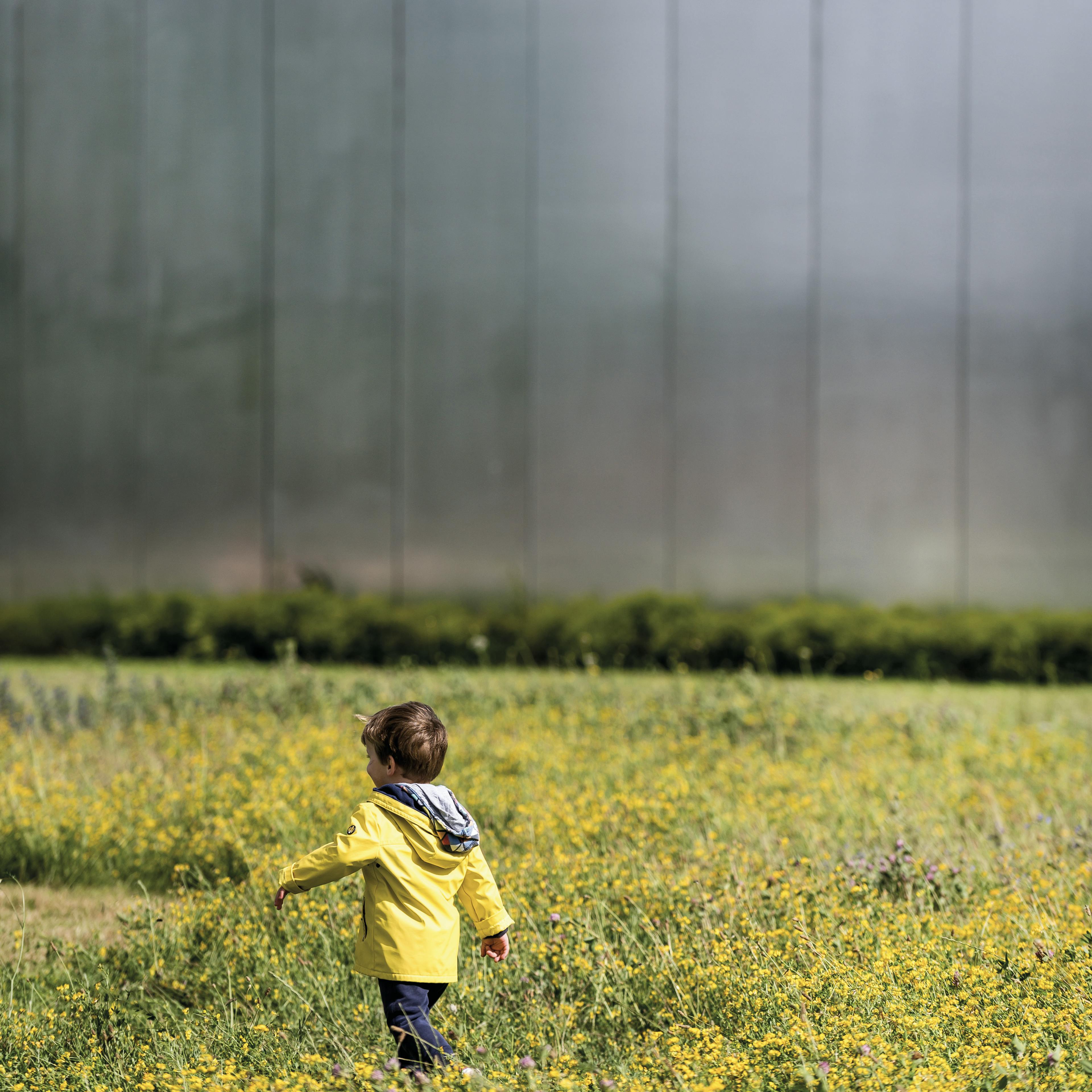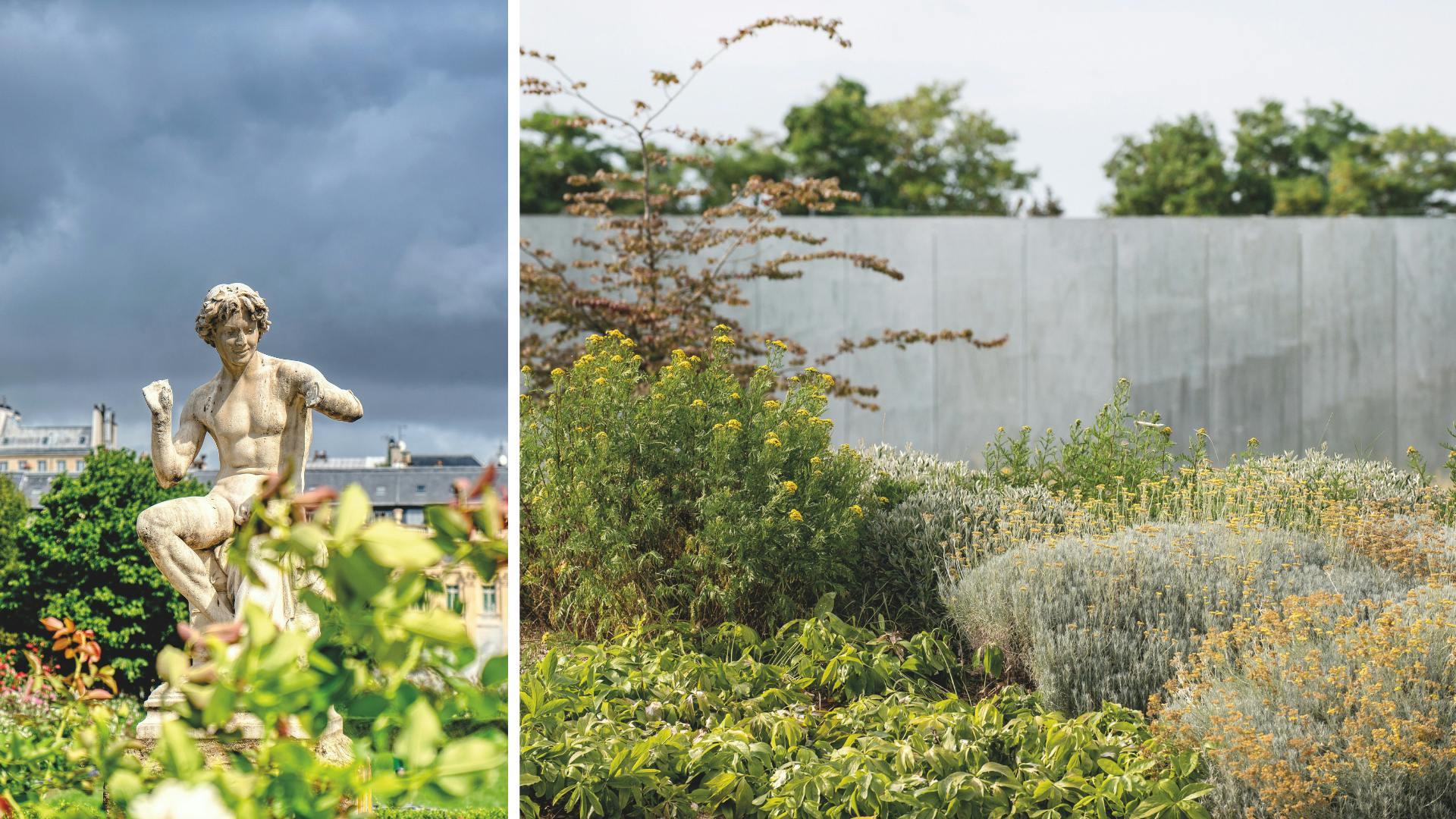
Art & Culture
Nature & Culture
Museum gardens are much more than just the natural setting for the institutions housed within them. In fact, they should be seen as an integral part of the cultural experience.
Sceptics need look no further than our conversation with Annabelle Ténèze and Arnaud Amelot, respectively the Director of the LouvreLens Museum and the Director of Architecture, Maintenance and Gardens at the Louvre Museum.

Museum gardens are anything but afterthoughts, so why are they not as prominent as their neighbouring cultural institutions?
Annabelle Ténèze: The park is quite simply inseparable from the Louvre-Lens Museum, and we even refer to the ensemble as a park-museum. By way of proof, the redevelopment of the grounds was part of the call for bids to design the museum’s architecture. Architects and landscape architects had to work together to create a coherent overall project. The Japanese agency SANAA designed a single-storey building that blends harmoniously into the environment, which was redesigned by French landscape architect Catherine Mosbach. This coordination has created an authentic dialogue between the two spaces – one which is enhanced by the large bay windows, a floor on the same level between the interior and exterior, and skilful use of lighting. From the Glass Pavilion, the view opens out onto the twin spoil tips of Loos-en-Gohelle, the two highest in Europe and icons of the site’s industrial past. On the other side, you can see Stade BollaertDelelis and the RC Lens football play
Arnaud Amelot: The museums and their gardens should be considered as a whole. The Jardin des Tuileries, but also the Jardin du Carrousel and the small peripheral gardens around the Sully quadrilateral, are all part of the Domaine National, just like the Louvre buildings. In fact, they are not overseen by the City of Paris, but by the Établissement Public du Louvre itself. This means that every part of the grounds is covered, including the trees, lawns, and fountains, and requires a dedicated chief architect responsible for preserving historic monuments.
© Michael Heise - Jardin des Tuileries © F. Iovino - Louvre-Lens
So any visit really starts in the gardens!
Annabelle Ténèze: Absolutely! Our visitors walk through the 50-acre park, which alternates between forest, meadow and reflecting pools. It’s a living space, frequented by local residents, sports enthusiasts and children. It should really be seen as a gentle transition before or after the experience of visiting the Louvre-Lens, and more broadly as a connection between the museum and the town. It can just as easily be a destination in its own right, particularly on warm or sunny days, when it plays host to guided tours, sports events, creative workshops, festivals, and even the Olympic torch, which passed through the park and the Galerie du Temps! It’s a place filled with life, emotion and laughter, naturally encouraging you to continue your visit to the museum.
Arnaud Amelot : We also believe that the experience of visiting the Louvre begins when you step through the gates of the Jardin des Tuileries, and we ensure this atmosphere is maintained through our work with cultural coordinators. Visitors walk through the park, discovering the garden (a masterpiece in itself), tended according to traditional methods by expert gardeners. The architecture of the Tuileries, not to mention its many classical statues, makes it an open-air museum in its own right!

These two green spaces, in both Paris and Lens, share a strong historical dimension. Could you tell us more?
Arnaud Amelot : The Jardin des Tuileries has seen many different eras over the course of its history. If you can picture it in its early days, what is now the largest park in the centre of the French capital was actually the transition between Paris and the surrounding countryside. Catherine de’ Medici was the first to take any real interest in it, transforming it into a semi-urban garden. This was followed by a series of successive redesigns, culminating in its redevelopment as part of the Grand Louvre project.
Annabelle Ténèze: The Louvre-Lens Museum and its grounds are located on a former mining site. This industrial heritage is part of the region’s identity, and Catherine Mosbach has used it to reshape the spaces while respecting the original topography. The main avenues of today’s park follow the lines of the old railways used to transport coal, and pieces of sandstone and shale still border the footpaths. By its very nature and history, the Louvre-Lens is highly sensitive to all aspects of mining history. It regularly evokes this connection through the things that make the museum so unique – its works and exhibitions – but also through its cultural outreach activities. These projects aim to shed light on this industrial heritage which, paradoxically, has had a major influence on the park’s biodiversity
On this topic, how can we preserve this biodiversity while also welcoming high visitor numbers?
Arnaud Amelot: This is one of our main challenges. It involves a great deal of education and clear signage as part of an overall awareness campaign to redefine visitors’ relationship with the site. Meanwhile, we’re working on a new master plan to upgrade and revegetate the gardens through investing in more resilient plants and extending the greening area, which had shrunk over time. However, this increase in natural spaces must always be done in a way that respects history. Fortunately, we can consult reference works from the 17th century, when more mineral aspects of the environment were far more contained. Back then, it was Jean Le Nôtre, the father of André Le Nôtre, who was responsible for maintaining the Jardin des Tuileries!
Annabelle Ténèze: The need to preserve biodiversity was built into the design of the park from the outset. In the late 2000s, Catherine Mosbach was already suggesting areas for spontaneous vegetation – a pioneering choice at the time! The gardeners responsible for these areas work with the ecosystems to help preserve them. We also have a vegetable garden, beehives, and insect hotels – all sites and activities that contribute to our cultural coordination and communication projects.
Louvre-Lens - Jardin des Tuileries
Other “creatures” sometimes spring up amidst the fauna and flora. How do parks enhance the artistic offerings of their museums?
Arnaud Amelot: The Tuileries regularly hosts pop-up events, such as the National Heritage Days and the Paris Art Basel Fair. What’s more, driven by the Louvre’s director, Laurence des Cars, the museum welcomes artists in residence who are provided with enormous freedom. Throughout Mohamed Bourouissa’s residency,the artist spent a great deal of time in the gardens, which inspired him to produce a series of short videos. Since May, we have been exhibiting a work by sculptor Barbara-Chase Riboud. There’s always something going on at the Tuileries!
Annabelle Ténèze: The artistic dimension of the park at Louvre-Lens is multifaceted. Since 2018, as part of the “Louvre en partage” project, we have been hosting works of art exhibited throughout the various outdoor spaces. For example, a bronze sculpture by Françoise Pétrovitch (Tenir), chosen by local residents, has been installed in the woods, while the monumental steel arches of Bernar Venet’s Désordre can be found in a meadow in the park, almost as a nod to the region’s history. Closer to the museum, Niki de Saint Phalle’s Blue Obelisk with Flowers can be interpreted as a real transition between the interior and the exterior. From outside to inside, this dialogue is a two-way street, as the freshly refurbished Galerie du Temps offers free access to a space spanning 32,000 square feet. Here, visitors can deep-dive into 5,000 years of history through more than 250 works, many of which evoke the natural surroundings. This visit is an aesthetic experience that encourages reflection, a sensitive journey through the centuries and through creation itself. You can wander between an alley of Egyptian sphinxes, Giuseppe Arcimboldo’s famous plant portraits, Jacopo Bassano’s very first animal portrait and a landscape by Théodore Rousseau. Nature is an eternal source of inspiration!
Article from the Magazine Esprit de France.
Cover - ©Olivier Ouadah
Discover our 4-star hotels near the Louvre Lens Museum and the Louvre Museum in Paris.
Published on 12/09/2025








